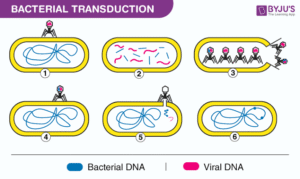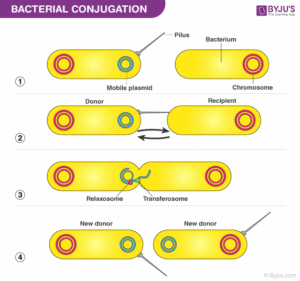Back to: MICROBIOLOGY 500 LEVEL
Welcome to class!
Welcome back, my ever-curious microbiology scholar! I’m really glad to have you here again. You’re not just learning these big scientific words—you’re building the foundation for real-world breakthroughs. Today’s topic might sound like something out of a futuristic movie, but it’s actually happening in laboratories across the world—and it’s simpler than you think. Let’s talk about transformation, transduction, and electroporation—three powerful ways scientists introduce new DNA into cells.
Transformation, Transduction, Electroporation
Imagine giving someone a recipe to make a new dish they’ve never cooked before. That recipe is like DNA, and the person is the cell. But how do you get the recipe into their hands? You can give it directly, send it through a friend, or maybe even throw it over the gate with enough force so it lands safely on their table. That’s exactly what transformation, transduction, and electroporation help scientists do—they’re just different methods of delivering DNA into cells.

Transformation
Transformation is when a cell takes up naked DNA from its environment—no pressure, no force, just gentle uptake.
This happens naturally in some bacteria like Bacillus and Streptococcus. But in the lab, scientists make bacterial cells “competent” (ready to accept DNA) using chemical treatments like calcium chloride.
Example: If you place a new SIM card into a phone and it immediately starts working with a different network—that’s like transformation: accepting new info and working with it.
Transformation is widely used in genetic engineering to introduce plasmids carrying useful genes into bacterial cells.
Transduction
Transduction is like DNA delivery by virus.
Here, a bacteriophage (a virus that infects bacteria) carries DNA from one bacterium to another. It’s like a taxi that mistakenly picks up someone else’s bag and drops it off at a new destination.
There are two types:
Generalised transduction: random pieces of DNA are transferred.
Specialised transduction: only specific genes are carried.
Real-life example: Think of a food delivery rider who picks up the wrong order and drops it at your house—next thing you know, you’re eating someone else’s suya!
Electroporation
Electroporation is a high-tech lab method where scientists use electric shock to open up pores in a cell’s membrane so DNA can enter.
The cell membrane temporarily becomes “leaky”, and foreign DNA slides in. After the pulse, the cell seals up again and starts using the new DNA.
Example: It’s like briefly opening a locked gate with a voltage zap so your parcel can be tossed in quickly—then it locks itself back.

This method works not just for bacteria, but also for yeast, plant, and animal cells.
Why They Matter
These three techniques are at the heart of modern molecular biology:
Producing medicines like insulin
Genetically modifying crops
Studying genes and curing diseases
They are used in everything from agriculture to vaccine research.
Summary
- Transformation: Cells take up DNA directly from their environment.
- Transduction: Viruses (bacteriophages) transfer DNA between cells.
- Electroporation: Electric shock creates pores for DNA to enter cells.
- These methods are vital for genetic engineering, biotechnology, and microbiological research.
Evaluation
- What is transformation in bacterial cells?
- How does electroporation introduce DNA into a cell?
- What role do bacteriophages play in transduction?
You’ve done brilliantly again today! You now understand how scientists introduce new genetic information into cells using nature’s clever tools—and sometimes a little electricity! Keep growing your knowledge with joy and confidence. Afrilearn is here, cheering you on to become the microbiologist the world is waiting for. See you at the next class, champion!
